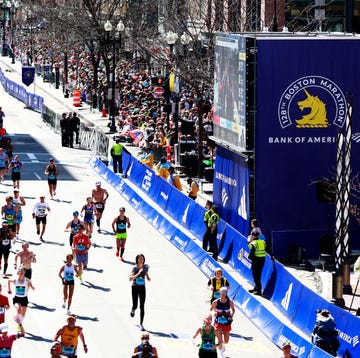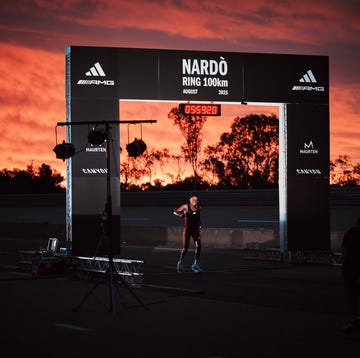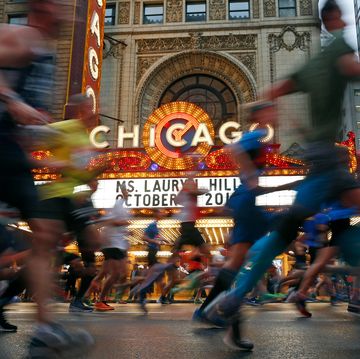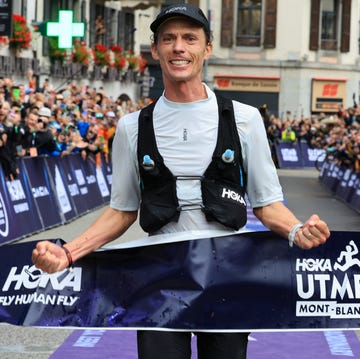Elle St. Pierre put a good face on it after the women’s 1500-meter final. She answered reporters’ questions graciously and managed to hide her disappointment. But given how fierce a competitor she is, this one had to sting.
The Olympic 1500-meter final was historically fast. Faith Kipyegon of Kenya won her third consecutive gold medal in 3:51.29, an Olympic record.
Jessica Hull of Australia won silver in 3:52.56. And Georgia Bell of Great Britain won bronze in 3:52.61.
St. Pierre was eighth, well out of the medals, in 3:57.52. Her Team USA teammate, Nikki Hiltz, passed St. Pierre in the final 100 meters to finish seventh in 3:56.38. Both had said they wanted to win medals or better the American record (3:54.99), and neither happened.
The Americans were in it early, but the race went out at a crushing pace. Gudaf Tsegay of Ethiopia led the field through the first 400 meters in 59.3 seconds. Tsegay later paid for the pace, fading to last of the 12 athletes in the field.
St. Pierre was right behind her at 400, in second place, in 59.4. Kipyegon hung back just a touch (59.8) and was in fourth, but after all, she is the world record-holder in the event.
“It went out a bit too fast,” St. Pierre said after the race, but she said that going with the leaders was her strategy. “I think I ran the race plan that my coach told me to run, and I’m still happy with that. It’s all about positioning and staying tough. So that’s what I tried to do.”
Despite the hard early pace, she felt good at the bell. But with 200 to go, she had nothing left. “It’s really hard to gather yourself again,” she said. “So I’m, you know, disappointed with the last bit there.”
St. Pierre’s coach, Mark Coogan, told Runner’s World in a text message, “Elle might be able to run 3:52, but not off of a 59!” He believed she could get a medal this evening.
Hiltz, who was in fifth after the opening quarter, had no regrets about it. Better to put themselves in the race.
“I didn’t want to miss the move, you know, and it’s risky to play that game of like, I’m going to come through in 2:08 [for 800 meters],” they said. “Because you, you don’t know if you’ll have enough. That was never the plan. It was, put yourself in fourth through sixth and just hang on. So that’s what I did.”
Usually when Hiltz makes a move at the end of a race held in the U.S., they can drop everyone else. That doesn’t happen at the Olympics. “I tried to make a move with 500 to go and there [were] just so many bodies there,” they said. “I can’t drop a single person here.”
Hiltz believes they might need to pick up more experience racing internationally. “Maybe it’s worth going to Europe early in the season, and not racing domestically as much,” they said.
But they resisted saying it was an opportunity squandered. “I think you’re either winning or you’re learning,” they said. “So I learned a lot.”
For Hiltz, who is trans and nonbinary and uses they/them pronouns, running in the Olympic final and lifting up their community held almost as much importance as the result.
They were asked what would they say to trans and nonbinary youth watching at home?
“I just want them to know that they’re loved and belong and yeah, they can be on the biggest stage in sport and be themselves.”
St. Pierre and Hiltz have a few things in common. They’re both 29 and running as fast as they ever have. And St. Pierre, too, is held up as an example for communities; in her case it’s mother-athletes (she has a 17-month-old son) and farmers. But today, she wasn’t thinking about that.
So when she was asked, for the umpteenth time, about returning to competition after having a baby and whether this was a “relaunch” of her career, she resisted.
“People call it a comeback,” she said, “but I like to just call it my career.” That career includes, yes, a baby, but tonight at the Olympics in Paris, it was about getting on the podium. And finishing eighth was not the result she wanted.
—Brian Dalek contributed to this report.

Sarah Lorge Butler is a writer and editor living in Eugene, Oregon, and her stories about the sport, its trends, and fascinating individuals have appeared in Runner’s World since 2005. She is the author of two popular fitness books, Run Your Butt Off! and Walk Your Butt Off!















